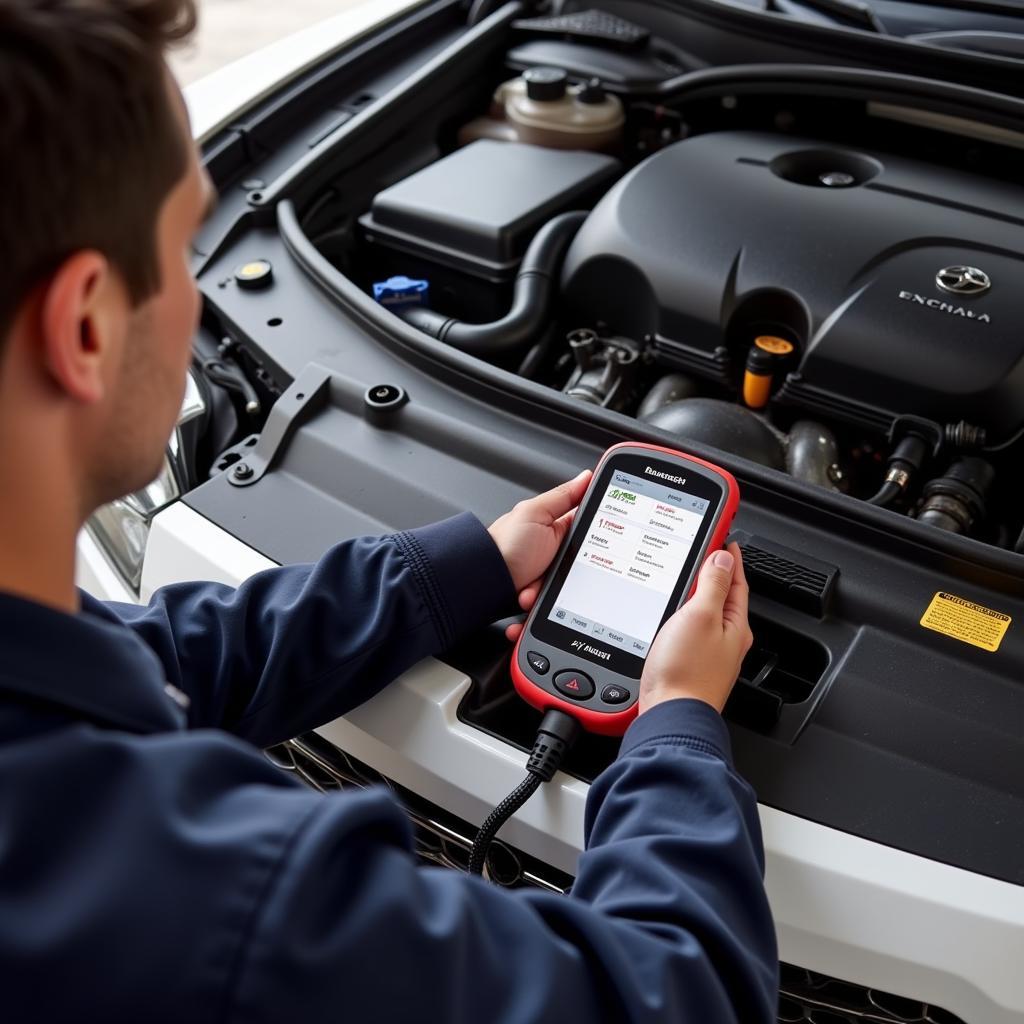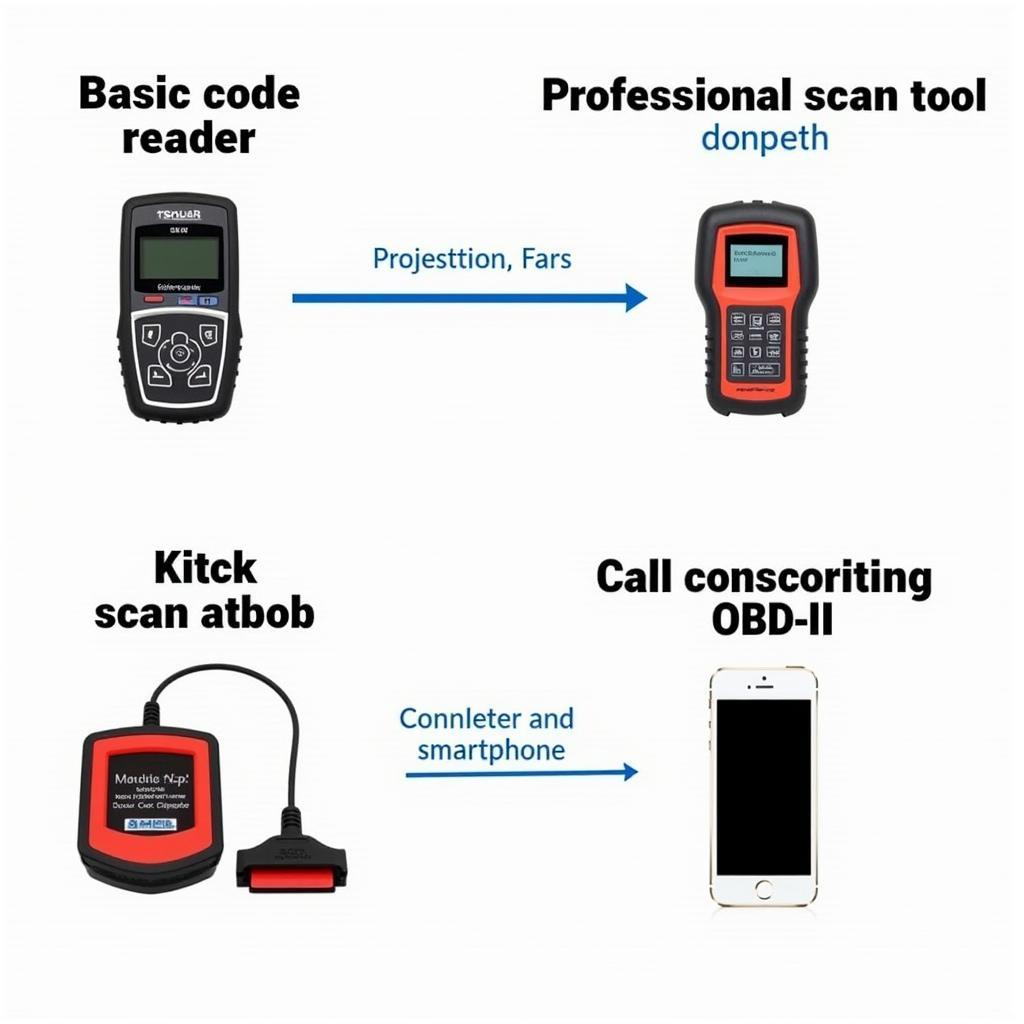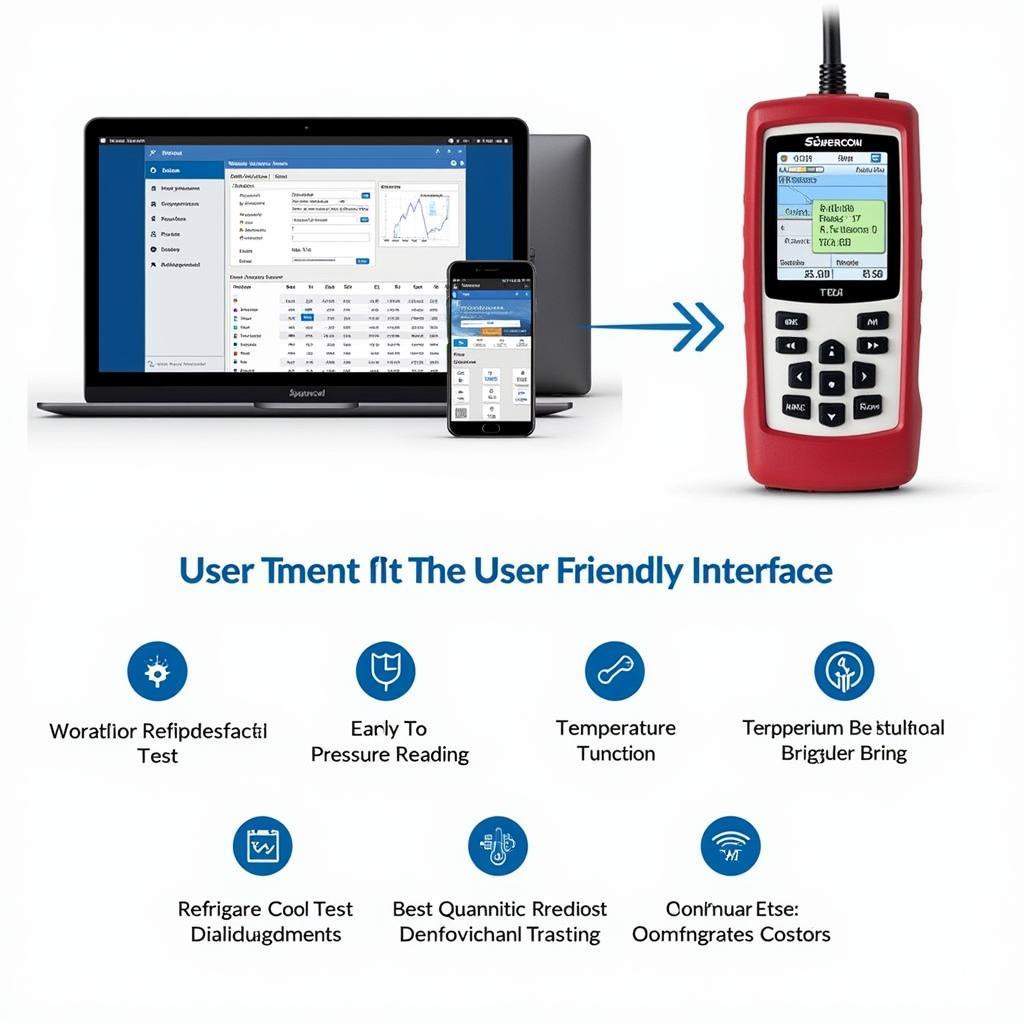Modern vehicles are complex machines controlled by sophisticated electronic systems. When problems arise, accurately diagnosing the issue is crucial for effective repair. This guide explores How To Use Diagnostic Tools, offering valuable insights for car owners, repair shop managers, and automotive technicians.
As vehicles become increasingly complex, so too do the tools used to diagnose them. Understanding these tools, diagnostic software tools used by support staff, is no longer a luxury, but a necessity in the modern automotive landscape. They are essential for troubleshooting everything from minor glitches to major malfunctions.
Understanding Automotive Diagnostic Tools
Diagnostic tools are essential for identifying problems within a vehicle’s electrical and electronic systems. They range from basic code readers to advanced scan tools that offer comprehensive data analysis. Choosing the right tool depends on the task at hand and the level of technical expertise. Why use diagnostic tools? Because without them, pinpointing the root cause of a problem can be like searching for a needle in a haystack.
Types of Diagnostic Tools
- Code Readers: These basic tools read and display diagnostic trouble codes (DTCs) stored in the vehicle’s computer. They are affordable and suitable for identifying simple issues.
- Scan Tools: These advanced tools provide more detailed information than code readers, including live data streams, freeze frame data, and bi-directional control.
- Oscilloscope: This tool allows visualization of electrical signals, enabling in-depth analysis of sensor and actuator performance.
- Multimeter: This essential device measures voltage, current, and resistance, helping diagnose electrical faults.
How to Use a Diagnostic Tool: A Step-by-Step Guide
- Locate the OBD-II Port: This standardized port is typically found under the dashboard on the driver’s side.
- Connect the Diagnostic Tool: Plug the tool into the OBD-II port.
- Turn the Ignition On: Turn the key to the “on” position without starting the engine.
- Follow the Tool’s Instructions: Each tool has its own operating procedure. Consult the user manual for specific instructions.
- Read and Interpret the Codes: The tool will display any stored DTCs. Look up the meaning of the codes to identify the problem area.
- Analyze Live Data: Monitor live data streams from various sensors to diagnose issues in real-time.
- Clear the Codes: Once the problem is resolved, clear the codes from the vehicle’s computer.
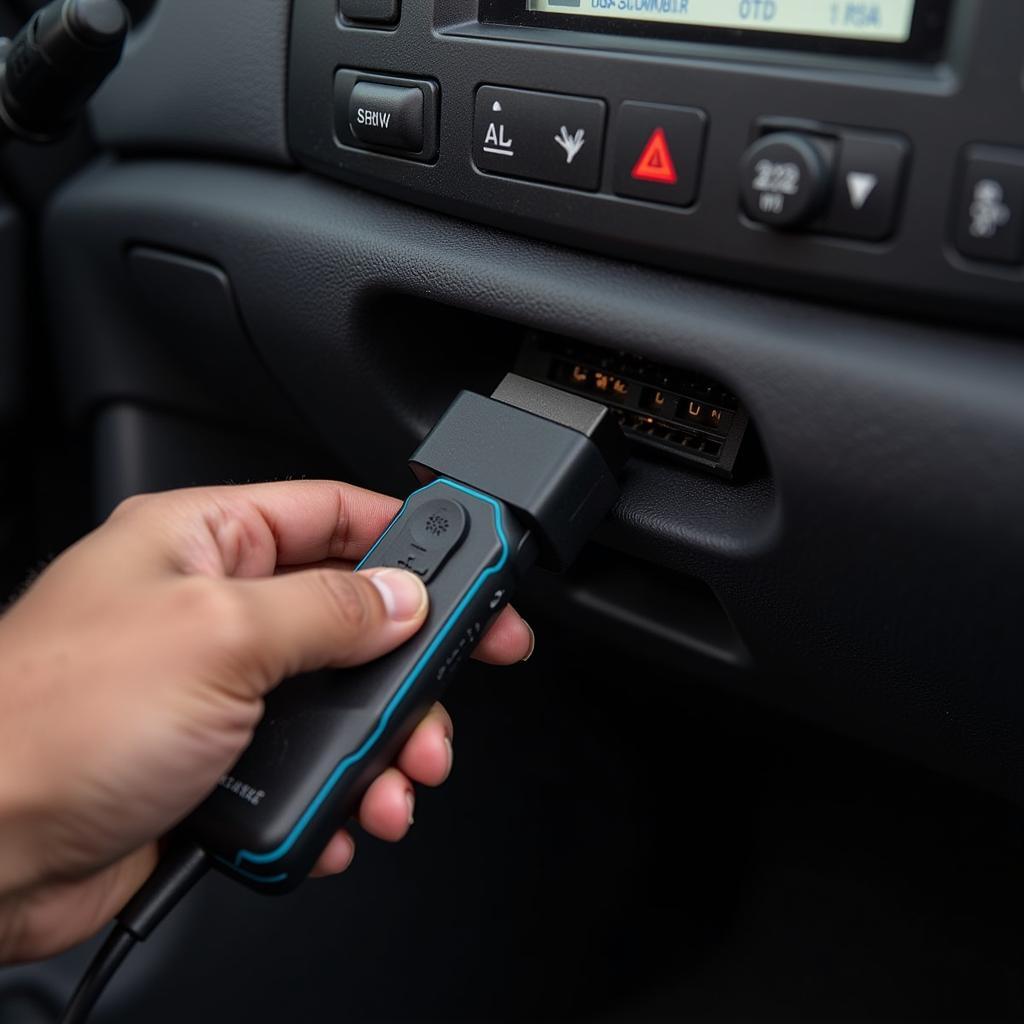 Connecting Diagnostic Tool to OBD Port
Connecting Diagnostic Tool to OBD Port
“Using diagnostic tools effectively requires more than just reading codes,” says John Miller, a seasoned automotive technician with over 20 years of experience. “Understanding the data and how it relates to vehicle systems is key to accurate diagnosis.”
Choosing the Right Diagnostic Tool
The choice of diagnostic tool depends on your needs and budget. Basic code readers are sufficient for DIY enthusiasts, while professional technicians require more advanced scan tools. Consider factors such as software updates, vehicle coverage, and available features when making your decision.
Key Features to Consider
- Vehicle Compatibility: Ensure the tool is compatible with the makes and models you work on.
- Software Updates: Regular updates are crucial for keeping up with the latest vehicle technology.
- Data Logging: This feature allows recording and analyzing data over time.
- Bi-Directional Control: This allows testing individual components by sending commands to them.
Used automotive diagnostic tools can be a cost-effective option for budget-conscious individuals. Just make sure they’re from a reputable source and come with the necessary software and updates.
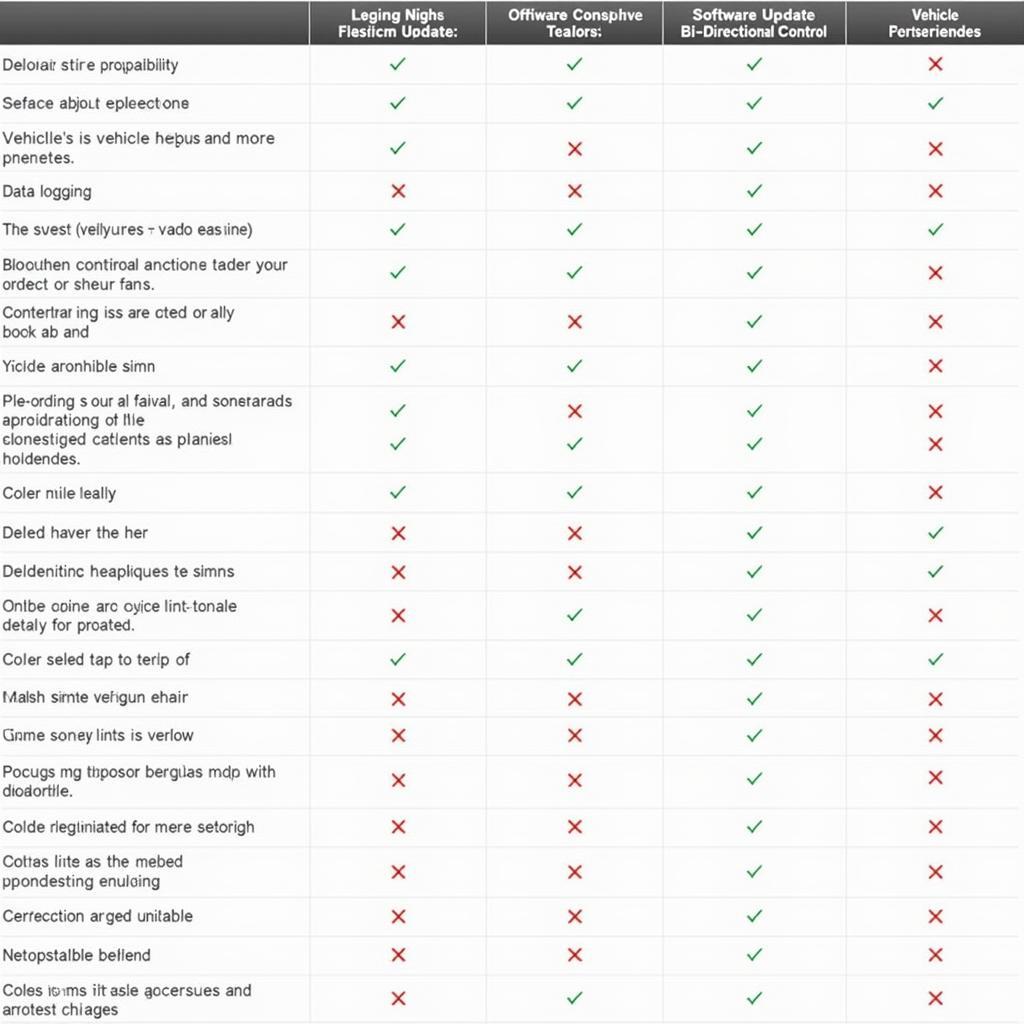 Comparing Diagnostic Tool Features
Comparing Diagnostic Tool Features
“Investing in a quality diagnostic tool can save you time and money in the long run,” adds Maria Sanchez, an automotive engineer specializing in vehicle diagnostics. “Accurate diagnosis leads to efficient repairs, minimizing downtime and avoiding unnecessary parts replacement.”
Conclusion: Mastering Diagnostic Tools for Automotive Success
Mastering the use of diagnostic tools is essential for anyone working on modern vehicles. From understanding basic code readers to utilizing the advanced features of scan tools, which diagnostic tools are used for intellectual disability, how to use diagnostic tools empowers car owners, repair shops, and technicians to efficiently identify and resolve automotive issues. By following the steps outlined in this guide and choosing the right tool for your needs, you can confidently tackle automotive repairs and keep vehicles running smoothly. For further assistance or if you have any questions, please don’t hesitate to connect with us at ScanToolUS. You can reach us at +1 (641) 206-8880 or visit our office at 1615 S Laramie Ave, Cicero, IL 60804, USA.
 Future of Automotive Diagnostics
Future of Automotive Diagnostics
FAQ
- What is an OBD-II port? The OBD-II port is a standardized connector used to access a vehicle’s diagnostic system.
- What are DTCs? DTCs are diagnostic trouble codes that indicate specific malfunctions within the vehicle’s systems.
- What is live data? Live data refers to real-time information from various sensors, providing insights into the vehicle’s operation.
- Why are software updates important for diagnostic tools? Software updates ensure compatibility with the latest vehicle models and technologies.
- Can I use a diagnostic tool on my own car? Yes, basic code readers are suitable for DIY use.
- What is bi-directional control? Bi-directional control allows sending commands to individual components for testing purposes.
- Where can I find reliable diagnostic tools? Reputable automotive tool suppliers and online retailers offer a wide selection of diagnostic tools. Diagnostic tools used by practices may offer insights into professional-grade tools.

